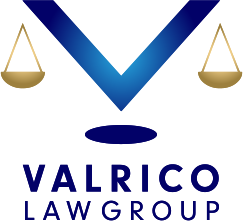Thankfully, we have reached the end of the Atlantic hurricane season. However, it remains essential for West Central Florida homeowners to be prepared for windstorm damage in the winter and early spring. Often, the slightly cooler months in the Tampa Bay area are accompanied by severe storms, and strong winds can result in substantial property damage. When it comes to storms that have the potential to damage your home, all storms are not equal. However, your home can be damaged by serious windstorm damage no matter what time of year or the type of severe storm you are facing.
Learning More About Types of Damaging Winds on Florida’s Gulf Coast
While you might not have realized it, there are many different types of winds that can occur in storms, and there are numerous terms used to define these winds. Each of the damaging wind types we are about to discuss has its own characteristics, according to the National Oceanic and Atmospheric Administration’s National Severe Storms Laboratory:
- Straight-line wind: this term is used to refer to any thunderstorm winds that do not rotate (in other words, any thunderstorm winds that are not associated with a tornado);
- Downburst: this is a damaging storm type that is often larger than 2.5 miles across and often involves a downward, “outward burst of damaging winds on or near the ground,” and often produces similar damage to “strong tornado”;
- Microburst: this is a type of downburst that is small and concentrated in a particular area, and is typically short-lived (only about 5-10 minutes in time) and small (less than 2.5 miles across), but with extremely strong winds with speeds up to 168 miles per hour;
- Gust front: this is a “leading edge of rain-cooled air that clashes with warmer thunderstorm inflow,” and often causes sudden wind gusts that can be damaging; and
- Derecho: this is a type of widespread, long-lasting windstorm that often includes microbursts and downbursts, and often has wind gusts of at least 58 miles per hour.
The types of downbursts and microbursts we see and experience in Florida are different from those in other parts of the country. When we see microbursts in Florida causing windstorm damage, the storm is most often a “wet microburst,” which is “accompanied by heavy precipitation at the surface.” In other words, they usually come with thunderstorms.
Costs of Windstorm Damage in the Tampa Bay Area
In Florida, we all need to be aware that almost any storm that strikes can bring damaging winds-whether they are sustained winds that are part of a large thunderstorm or high-speed gusts that are part of another type of weather system. If your property sustains storm damage, it is important to be prepared and file a claim as soon as possible. According to an article in InsuranceQuotes.org, windstorm damage is one of the most common reasons that homeowners file insurance claims.
While windstorm damage claims can vary, a recent article in the Palm Beach Post reported that Florida windstorm damage from Hurricane Irma totaled more than $19 billion. Although most hurricane risks are likely over for the upcoming months, other severe storms could produce some of the damaging winds we discussed.
Contact a West Central Florida Windstorm Damage Lawyer
Do you have questions about filing a windstorm damage claim? Or were you denied compensation after filing a recent hurricane claim? A West Central Florida windstorm damage attorney can assist you. Contact the Valrico Law Group for more information.
http://www.nssl.noaa.gov/education/svrwx101/wind/types/
http://www.palmbeachpost.com/news/state–regional-govt–politics/irma-wind-damages-pegged-more-than-billion/ztAzZvTkmaGzVgEp2BN7gO/ http://www.insurancequotes.org/home/elements-of-3-common-homeowners-insurance-claims-wind-water-fire/

